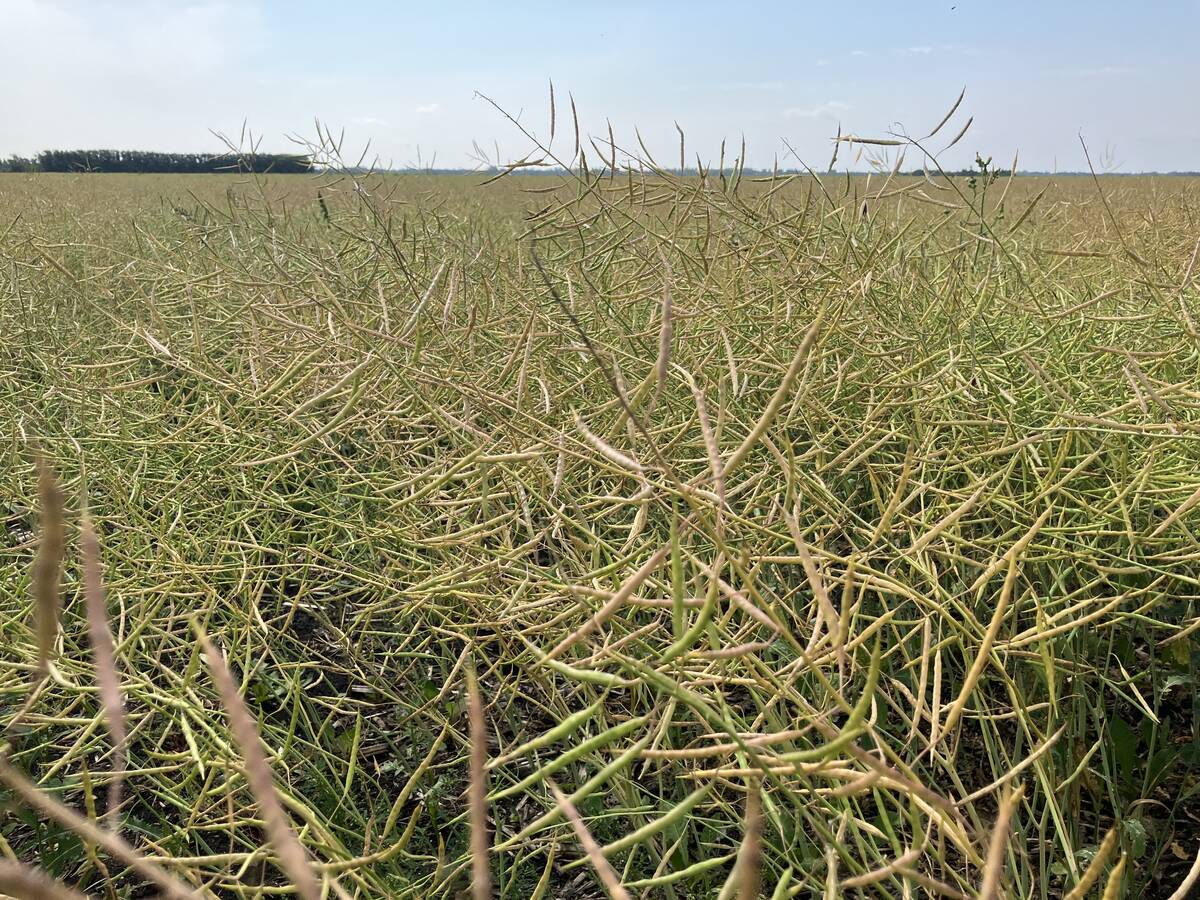PEDDAMETTAPALLY, India (Thomson Reuters Foundation) — Eight-year-old Sandhya Rani tries to walk faster. It is 6 p.m. already and soon the sun will set.
But the three water pitchers balanced on her shoulders, which she filled from a borehole well about half a kilometer from her home, slow the child down.
The well is the only source of drinking water for Rani’s family and neighbours in PeddaMettaPally village in southern India’s Andhra Pradesh state.
That will change in a few years when a proposed 50 metre high, 2.3 kilometre long dam on the Godavari River makes water more abundant in this region.
Read Also

South American soybeans will have less impact on canola
South American production will, as usual, affect the global oilseed market, but Canadian canola is on the outside looking in until it can get China back or find alternative buyers.
But Rani will not benefit.
Her home, and those of hundreds of thousands of other tribal people, will be drowned by the planned dam, and she and her family turned into what critics of the dam term “development refugees.”
The Polavaram dam, also known as the Indirasagar dam, is part of India’s plan to inter-link its rivers and to collect more river runoff, largely to use for agricultural irrigation as climate change-related droughts worsen.
Prime minister Narendra Modi’s government sees the project as crucial to the country’s water and food security, but critics say its benefits are outweighed by its effects on the region’s environment and its people.
Maneka Gandhi, India’s minister for women and child development, called the plan “extremely dangerous” before taking office last year, saying it would destroy the local ecosystem and cause huge losses of land.
The proposed dam would divert 2.2 trillion litres of water a year from the Godavari River to the Krishna River, which would be enough to fill more than 2,000 Olympic swimming pools a day.
The diversion is designed to capture some of the 700 trillion litres of Godavari River water that now flows annually to the sea.
Officials say the saved water would irrigate more than 700,000 acres of land, while the dam would produce 960 megawatts of hydroelectricity.
The electrical generation would be a boost for Andhra Pradesh, which is seeking rapid development and to build a new capital city but has a shortfall of slightly more than 1,000 megawatts of generating capacity.
However, neighbouring states have objected to the plan, including Telangana, which in 2014 saw 130 of its villages transferred to Andhra Pradesh in anticipation of the project. All 130 would be submerged by the dam.
The states of Orissa and Chhattisgarh are also worried about potential environmental impacts, such as flooding within their borders and loss of forest and farmland. They oppose the dam, and Orissa has filed a Supreme Court case asking that the project be cancelled.
However, Venkaiah Naidu, India’s minster for urban development, said there is “no controversy over the dam whatsoever.”
Chandrababu Naidu, chief minister of Andhra Pradesh and a supporter of the dam, has asked the federal government to speed up approvals and construction with the aim “to complete the project in the next four years.”
The government says building the dam will submerge 276 villages and displace 200,000 people, while activists say more than 300 villages will be destroyed and more than 300,000 people displaced.
People living in the threatened villages say don’t know what is to happen to them and their land.
“Until today, we haven’t received a single circular or notice from the government on the dam. We have no idea when it will be built, how exactly we will be affected and where we are going to be relocated. There is a complete information blackout,” said Bhanu Chandar, a 27-year old Koya tribal man who lives in Ummadivaram, a village of 627 people that would be submerged by the dam.
Chandra is a member of Adivasi Vidyarthi Sakshema Parishad, a tribal rights group.
Eru Kondalu, an anti-dam activist from neighboring Laxmipuram village, said the decision to drown the villages follows a decade-long lack of government investment in them.
“No road, office or school has been built, no scheme introduced. The government is treating the villages here as lost cases,” he said.
The frustration of the tribal communities could fuel an existing Maoist insurgency in the region, analysts warn.
Madkami Sema, a Maoist leader in neighboring district of Sukma in Chhattiagarh, is one of those who oppose the dam.
The project “will only benefit some rich but will harm marginal farmers and tribal people. Instead of such a large dam, the government could build small dams and tanks to provide water for irrigation,” said Sema.
Some people living in the threatened villages, tired of the suspense over their fate, say they are ready to relocate.
“If we have to go, we will go,” said Kadasar Muttamma, a 55-year-old tribal farmer in Bhagwanpura village.
“But first, we want land for land.”
Others are digging in their heels.
“We won’t go unless the land (for relocation) is fertile. And the height of the dam must never be increased further” to widen the flooded area, said Munjappa Pochamma, a villager in Ummadivaram.














